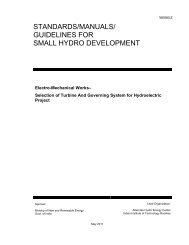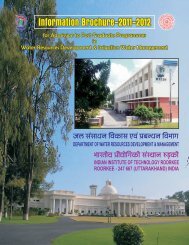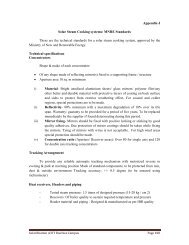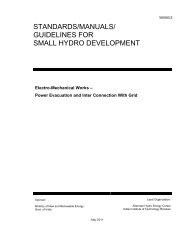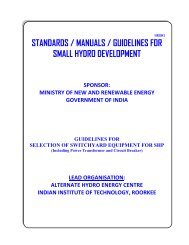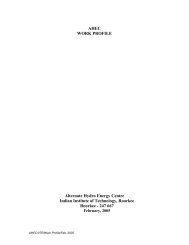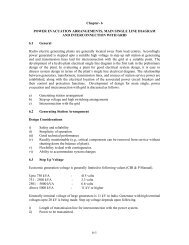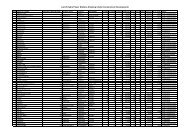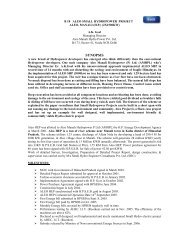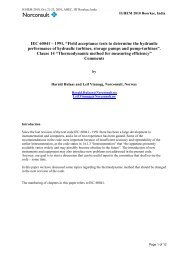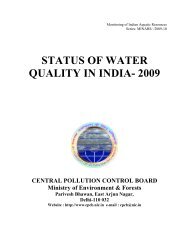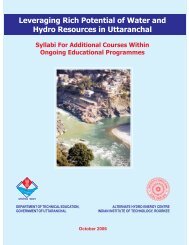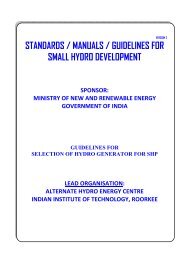annexures - Indian Institute of Technology Roorkee
annexures - Indian Institute of Technology Roorkee
annexures - Indian Institute of Technology Roorkee
Create successful ePaper yourself
Turn your PDF publications into a flip-book with our unique Google optimized e-Paper software.
t;jke jes'kJAIRAM RAMESHjkT; ea=h (Lora= çHkkj)i;kZoj.k ,oa ouHkkjr ljdkjubZ fnYyh & 110003MINISTER OF STATE (INDEPENDENT CHARGE)ENVIRONMENT & FORESTSGOVERNMENT OF INDIANEW DELHI - 110 003Forewordth20 January 2011I am pleased to present the “Guidelines for Preparation <strong>of</strong> Project Reports under National RiverConservation Plan and National Ganga River Basin Authority” prepared by the Alternate HydroEnergy Centre, IIT <strong>Roorkee</strong> in conjunction with the Ministry <strong>of</strong> Environment and Forests. Theseguidelines are intended to streamline and optimize the project reports and proposals submittedunder the National River Conservation Plan (NRCP) and National Ganga River Basin Authority(NGRBA).These guidelines reflect the increase in knowledge and experience that has taken place since the lastset <strong>of</strong> guidelines for detailed project reports (DPRs) were released in 2002.These guidelines are a major step forward, requiring a more holistic approach to project design.Under the NGRBA, there has been a shift from town-centric to a river basin-centric approach, withthe aim <strong>of</strong> creating a more comprehensive response to the problem <strong>of</strong> pollution on the Ganga.Where previous reports focused largely on the installation, maintenance, interception and diversion<strong>of</strong> drains and STPs within a city, these guidelines now require that project reports include a study <strong>of</strong> allwastewater generated, starting from the most basic unit <strong>of</strong> water use, whether a house or communityline to the city, and finally to the STP. This holistic approach will ensure the full coverage <strong>of</strong> a city andits sewage to ensure none <strong>of</strong> it escapes treatment.These guidelines also take a step-by-step approach to project preparation, which is another stepforward. The new guidelines require several stages <strong>of</strong> preparation before a plan for pollutionabetment is implemented. Each area has its own problems pertaining to water pollution, and theinitial steps ensure that each DPR will now be specifically tailored to these issues. This would include aCity Sanitation Plan and an evaluation <strong>of</strong> all possible sewerage options to ensure that the optimalchoice is selected, based on cost and suitability.These guidelines are an excellent start to a new era in the pollution abetment <strong>of</strong> rivers. It is my hopethat these guidelines will be dynamic, i.e., that they will expand and adapt in conjunction withknowledge and experiences gained in the future.I congratulate the team that has put together these guidelines and look forward to theirimplementation.(Jairam Ramesh)



